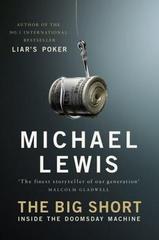 It's been 10 years since the bankruptcy of Lehman Brothers sparked a 4.5% single-day decline on the Dow Jones Industrial Average. That record, the biggest stock market drop since 9/11, was broken on September 29, 2008, by a 7% plunge. The Lehman bankruptcy, still the largest ever, with more than $600 billion in assets pre-crisis, was neither the only nor earliest catalyst of what became the Great Recession, though it brought systemic problems in the financial industry to stark light. Merrill Lynch and Bear Stearns, among many others, followed Lehman into dissolution, acquisition or bailout. Though the recession officially ended in June 2009, the economy took many more years to recover--a recovery that is at once precarious and top-heavy.
It's been 10 years since the bankruptcy of Lehman Brothers sparked a 4.5% single-day decline on the Dow Jones Industrial Average. That record, the biggest stock market drop since 9/11, was broken on September 29, 2008, by a 7% plunge. The Lehman bankruptcy, still the largest ever, with more than $600 billion in assets pre-crisis, was neither the only nor earliest catalyst of what became the Great Recession, though it brought systemic problems in the financial industry to stark light. Merrill Lynch and Bear Stearns, among many others, followed Lehman into dissolution, acquisition or bailout. Though the recession officially ended in June 2009, the economy took many more years to recover--a recovery that is at once precarious and top-heavy.
The housing bubble and related financial instruments made most people poorer and a few much richer. The Big Short: Inside the Doomsday Machine (2010) by Michael Lewis shows how a handful of unknown insiders figured out what was going on before the government or Wall Street's biggest players did. Lewis wades through the morass of subprime mortgages and their bundling into collateralized debt obligations to explain why a handful of people basically bet against the global economy (and won). In 2015, The Big Short was adapted into a film starring Christian Bale, Steve Carell, Ryan Gosling and Brad Pitt, which won the Academy Award for Best Adapted Screenplay. A movie tie-in version of The Big Short is available from Norton ($15.95, 9780393353150). Lewis's latest book, The Fifth Risk (Norton), comes out October 2, which is just a day shy of the 10th anniversary of the Emergency Economic Stabilization Act of 2008, aka The Bailout. --Tobias Mutter

